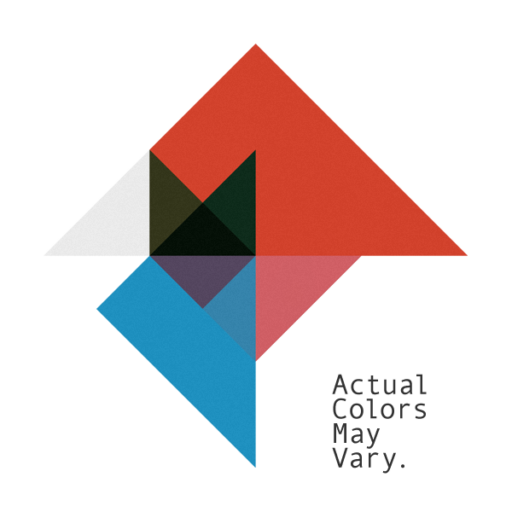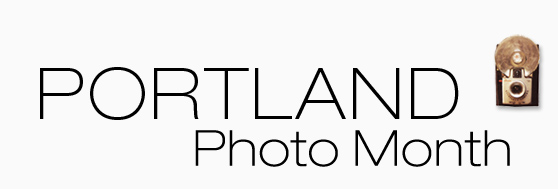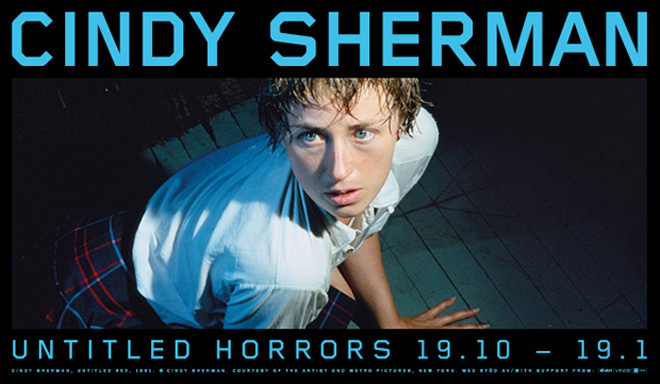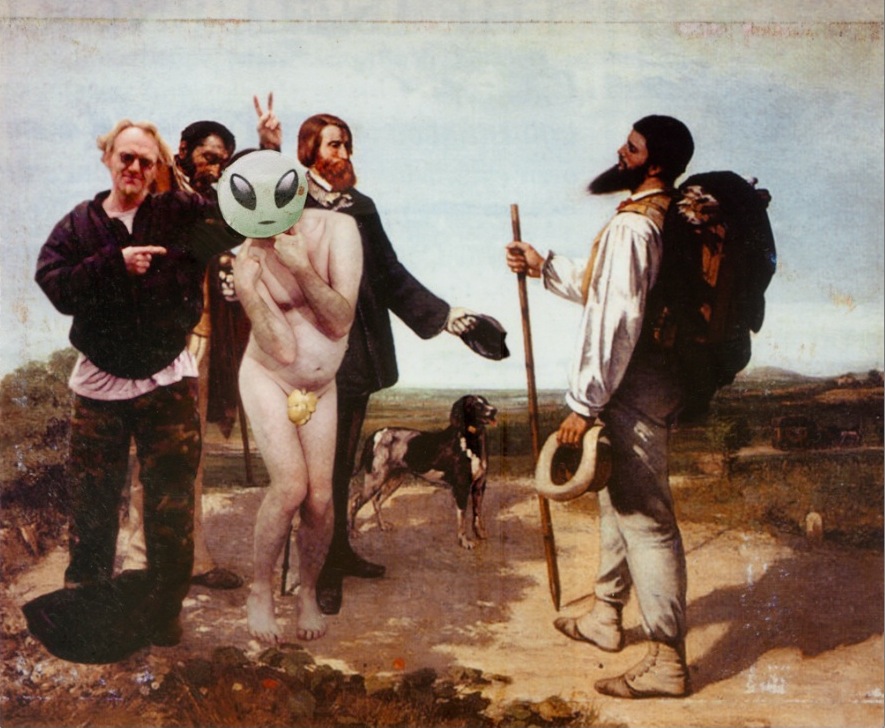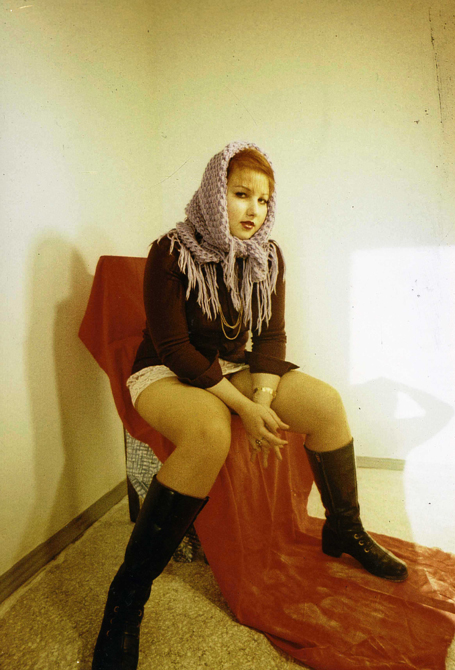Opening: Thursday, October 31, 2013, 7 p.m.
Exhibition: November 1, 2013 – January 26, 2014
Deichtorhallen Hamburg / House of Photography
Press Release, Deichtorhallen Hamburg:
House of Photography at Deichtorhallen Hamburg is pleased to announce an exhibition of the legendary photographer Guy Bourdin (1928–1991), to be on view from November 1, 2013 to January 26, 2014. This most comprehensive exhibition to date is both an overview of the essential components of Guy Bourdin’s oeuvre and an introduction to unveiling works from his personal archives which have never been seen before.
This is the first time that both his works as a painter and his notes on films will been shown at an exhibition. B&W shots dating from the 1950s are also included, showing portraits of artists and views of the city of Paris as well as Polaroids, sketches and texts. The exhibition examines Guy Bourdin’s oeuvre, but moreover, it provides insight into the complex working processes of the photographer’s mind and aims to establish his status as a visionaire image maker.
Guy Bourdin’s career spanned more than forty years during which time he worked for the world’s leading fashion houses and magazines. With the eye of a painter, Guy Bourdin created images that contained fascinating stories, compositions, both in B&W and in colors. He was among the 1st to create images with narratives, telling stories and shows that the image is more important than the product which is displayed. Using fashion photography as his medium, he sent out his message, one that was difficult to decode, exploring the realms between the absurd and the sublime. Famed for his suggestive narratives and surreal aesthetics, he radically broke conventions of commercial photography with a relentless perfectionism and sharp humor.
During the 1950s, Guy Bourdin launched his career with fashion assignments for Vogue Paris working in B&W. It’s nearly unknown, that half of the oeuvre of Guy Bourdin is black-and-white and as amazingly powerful as his colour works. He developed color photography to its maximum effect, creating dramatic accents with intense color saturation and textures in his compositions.
Guy Bourdin used the format of the double spread magazine page in the most inventive way. He tailored his compositions to the constraints of the printed page both conceptually and graphically, and the mirror motif so central in his work finds its formal counterpart in the doubleness of the magazine spread. Layout and design become powerful metaphors for the photographic medium, engaging the eye and with it, the mind. While on the one hand employing formal elements of composition, Guy Bourdin, on the other hand, sought to transcend the reality of the photographic medium with surreal twists to the apparent subject of his images and his unconventional manipulation of the picture plane. Given total creative freedom and with uncompromising artistic ethic, Guy Bourdin captured the imagination of a whole generation at the late 1970s, recognised as the highest note in his career.
Guy Bourdin was an image maker, a perfectionist. He knew how to grab the attention of the viewer and left nothing to chance. He created impeccable sets, or when not shooting in his studio rue des Ecouffes in le Marais, in undistinguished bedrooms, on the beach, in nature, or in urban landscapes. The unusual dramas that unfold in these seemingly everyday scenes and ordinary encounters pique our subconscious and invite our imagination. Moreover, he developed a technic using hyper real colours, meticulous compositions of cropped elements such as low skies with high grounds and the interplay of light and shadows as well as the unique make-up of the models.
Guy Bourdin irreverently swept away all the standards of beauty, conventional morals and product portrayals in one fell swoop. Around the female body he constructed visual disruptions, the outrageous, the hair-raising, the indiscreet, the ugly, the doomed, the fragmentary and the absent, torsos and death – all the tension and the entire gamut of what lies beyond the aesthetic and the moral,«
explains the exhibition’s curator Ingo Taubhorn. Bourdin investigates in minute detail the variables of fashion photography, from brash posing to subtle performances and from complex settings to novel and disturbing notions of images.
Guy Bourdin’s imagery not only changed the course of fashion photography but influenced a host of contemporary artists, photographers and filmmakers. It is without question, that Guy Bourdin’s work for Vogue and his highly acclaimed print advertising for Charles Jourdan in the 1970s are now being seen in the appropriate context of contemporary art.
Guy Bourdin
Guy Bourdin (1928-1991) was born in Paris. A painter his entire life and a self-taught photographer, he was working for magazines, such as Vogue as well as for brands such as Chanel, Ungaro and Charles Jourdan. He exhibited his first photographs at Galerie 29 in 1952. Nowadays his work has exhibited in the most prestigious museums, such as The Victoria & Albert Museum, The Jeu de Paume, The National Art Museum of China, The Tokyo Metropolitan Museum of Photography and The Moscow House of Photography . His oeuvres is part of the collection of many prestigious institutions such as the MoMA in New York, The Getty Museum in Los Angeles, SFMOMA in San Francisco and the collection of the V&A among others.
It’s reasonably easy to get people to stop and look« Nick Knight insists »but it’s difficult to get them to think. That’s what Guy Bourdin’s images did and still do.«
OPENING
7 p.m. on Thursday, October 31, 2013.
Speakers: Prof. Barbara Kisseler, Cultural Senator of the Free Hanseatic City of Hamburg, Dr. Dirk Luckow and Ingo Taubhorn.
CATALOG
The exhibition will be accompanied by a magazine featuring numerous illustrations, a foreword by Dirk Luckow, texts by Ingo Taubhorn, Mike Figgis, Peter V. Brinkemper, Annabelle Hirsch, Anna Seckler, Sabine Schnakenberg, David Riedel plus several statements about Guy Bourdin. Editor: Ingo Taubhorn, Design: Detlev Pusch. Ca. 140 pages, Price: 19,80 Euro
– – –
Deutsche Version
Text: Pressemitteilung Deichtorhallen Hamburg
GUY BOURDIN
RETROSPEKTIVE
1. NOVEMBER 2013 − 26. JANUAR 2014 IM HAUS DER PHOTOGRAPHIE
Das Werk des legendären französischen Fotografen Guy Bourdin (1928–1991) wird vom 1. November 2013 bis 26. Januar 2014 im Haus der Photographie der Deichtorhallen Hamburg präsentiert. Die bisher umfangreichste Guy Bourdin-Ausstellung stellt sowohl eine Auswahl der beeindruckendsten Modestrecken und Kampagnen Bourdins vor, als auch bisher unveröffentlichtes Material aus seinem persönlichen Archiv. Zum ersten Mal sind sein malerisches Werk und seine filmischen Notizen der Öffentlichkeit zugänglich. Darüber hinaus werden Polaroid-Fotos, Skizzen und Texte sowie Schwarz-Weiß-Aufnahmen aus den 1950ern präsentiert, die Künstlerporträts und Pariser Stadtansichten zeigen. Die Ausstellung zeichnet damit nicht nur das fotografische, malerische und filmische Gesamtwerk Bourdins nach, sondern gibt auch Einblicke in die Arbeits- und Denkweise dieses visionären Image-Makers.
In seiner über 50-jährigen Schaffenszeit hat Bourdin für die führenden Modehäuser und -magazine gearbeitet. Mit dem Blick eines Malers schuf er komplexe Bilder, die in unglaublichen Kompositionen faszinierende Geschichten in Schwarz-Weiß und Farbe erzählen. Er war einer der ersten Fotografen, der in Werbe- und Modefotografien anstelle eines Produkts eine Erzählung zum Bildinhalt erhob. Mit dem Medium der Modefotografie vermittelte er seine Botschaft und erforschte die zwischen dem Erhabenen und dem Absurden changierenden Bereiche. Berühmt für seine narrativen Bildinhalte und seine surreale Bildsprache, die Verbindung einfacher Objekte mit mehrdeutigen, oft rätselhaften Subtexten, brach Bourdin radikal mit allen Konventionen der Mode- und Werbefotografie. Guy Bourdins Karriere begann in den 1950er Jahren mit schwarz-weißen Modeaufnahmen für die Pariser Vogue. Es ist nahezu unbekannt, dass die Hälfte von Bourdins Œuvre aus Schwarz-Weiß-Fotografien besteht, die ebenso kraftvoll sind, wie seine bekannten Farbaufnahmen. Diese Farbfotografie steigerte er mit dramatischen kompositorischen Akzenten und intensiver Farbsättigung zur maximalen Ausdruckskraft.
Im Format der Doppelseite sah Bourdin eine künstlerische Herausforderung. Er behandelte die Doppelseite nicht wie zwei Einzelseiten, sondern als eine Gesamtseite mit Falz. Er schneiderte seine Kompositionen auf die konzeptuellen und grafischen Besonderheiten der Doppelseite zu – das Spiegelbild-Motiv, das zentral für seine Arbeiten ist, findet hier seine Entsprechung: Layout und Design des Magazins werden wichtige Metaphern für das fotografische Medium und sprechen damit Auge und Verstand gleichermaßen an. Während Bourdin formale Elemente benutzte, wollte er gleichzeitig das Realistische der Fotografie überwinden, indem er das dargestellte Motiv ins Surreale abwandelte und die Bildoberfläche unkonventionell manipulierte. Mit seinem kreativen Freigeist und einer kompromisslosen Arbeitsmoral gab Guy Bourdin der Fantasiewelt der Generation der späten 1970er Jahre eine bildliche Entsprechung.
Guy Bourdin wusste genau, wie man die Aufmerksamkeit des Betrachters erlangte und überließ nichts dem Zufall. Er kreierte makellose Settings und fotografierte in seinem Studio in der Rue des Ecouffes in Le Marais, in gewöhnlichen Schlafzimmern, am Strand, in der Natur oder im urbanen Raum. Die ausgefallene Dramatik, die sich in diesen scheinbar alltäglichen Szenen entfaltet, stachelt die Fantasie und das Unterbewusstsein an. Als Perfektionist entwickelte Bourdin nicht nur kompositorische Elemente wie hyper-reale Farben, angeschnittene Elemente und ein raffiniertes Zusammenspiel von Licht und Schatten, sondern sogar auch Details wie ein spezielles Make-Up für seine Models.
Guy Bourdin fegte sämtliche Schönheitsnormen, sittliche Gepflogenheiten und ordentliche Produktdarstellungen mit einem Strich respektlos weg. Rund um den weiblichen Körper baute er visuelle Verstörungen ein, das Empörende, das Haarsträubende, das Indiskrete, das Hässliche, das Scheitern, das Fragment, die Abwesenheit, den Torso und den Tod, – die gesamte Spannung und Spannweite des Außerästhetischen und Außermoralischen«,
so Ausstellungskurator Ingo Taubhorn. Minutiös erforscht Bourdin die Variablen der Modefotografie, zwischen plakativem Posing und subtiler Performance, komplexer Inszenierung und neuartig verstörender Bildauffassung.
Guy Bourdins Bilder veränderten nicht nur den Lauf der Modefotografie, sondern beeinflussten auch zahlreiche zeitgenössische Künstler, Fotografen und Filmemacher. Es steht außer Frage, dass Bourdins Arbeit für die Vogue und seine innovative Werbung für Charles Jourdan in den 1970er Jahren heute auch im Kontext der Gegenwartskunst gelesen werden kann.
Guy Bourdin (1928-1991) wurde in Paris geboren. Bourdin – im Herzen ein Maler und Autodidakt auf dem Gebiet der Fotografie – arbeitete für Magazine wie Vogue sowie für Marken wie Chanel, Ungaro und Charles Jourdan. Seine ersten Fotografien zeigte er 1952 in der Galerie 29. Heutzutage sind seine Arbeiten in den renommiertesten Museen der Welt ausgestellt, wie dem Victoria & Albert Museum, dem Jeu de Paume, den National Art Museum von China, dem Tokyo Metropolitan Museum of Photography und dem Moscow House of Photography. Seine Arbeiten befinden sich in den Sammlungen so bedeutender Institutionen wie dem MoMA in New York, dem Getty Museum in Los Angeles, dem SFMOMA in San Francisco und dem Victoria and Albert Museum, London.
It’s reasonably easy to get people to stop and look«, insistiert Nick Knight, »but it’s difficult to get them to think. That’s what Guy Bourdin’s images did and still do.«
Ergänzt wird die Ausstellung durch eine Auswahl von Werken aus der Sammlung F.C. Gundlach, die sich thematisch-inhaltlich an das Werk von Guy Bourdin anlehnen. Die von Sabine Schnakenberg kuratierte Kabinettausstellung »En compagnie de Guy Bourdin« zeigt rund 40 Werke u.a. von Man Ray, Erwin Blumenfeld, Helmut Newton, Chris von Wangenheim, William Klein, David LaChapelle, Tim Walker und Kristian Schuller.
ERÖFFNUNG
am Donnerstag, 31. Oktober 2013 um 19 Uhr im Haus der Photographie.
Es sprechen Prof. Barbara Kisseler, Kultursenatorin der Freien und Hansestadt Hamburg, Dr. Dirk Luckow, Intendant der Deichtorhallen Hamburg und Ingo Taubhorn, Kurator Haus der Photographie.
MAGAZIN
Zur Ausstellung erscheint ein Magazin mit zahlreichen Abbildungen, einem Vorwort von Dirk Luckow, Texten von Ingo Taubhorn, Mike Figgis, Peter V. Brinkemper, Annabelle Hirsch, Anna Seckler, Sabine Schnakenberg, David Riedel sowie Statements von Wegbegleitern Guy Bourdins. Hg. Ingo Taubhorn, Gestaltung: Detlev Pusch. Magazinumfang: ca. 140 S., 19,80 Euro.
–
→ Deichtorhallen Hamburg / House of Photography
–
Images/Bildnachweis:
- Cover/Titelbild: Guy Bourdin: untitled, polaroid, 10,8 x 8,5 cm © The Estate of Guy Bourdin, 2013
- #1: Guy Bourdin: untitled, 1960th, Oil on cardboard, 27 x 35 cm From the private archive of Guy Bourdin (previously unreleased) © The Estate of Guy Bourdin, 2013
- #2: Guy Bourdin: o.T. © Estate of Guy Bourdin
- #3: Guy Bourdin: Charles Jourdan – Spring 1975 © The Estate of Guy Bourdin, 2013
- #4: Guy Bourdin: Vogue Paris – December 1969. jewellery: Van Cleef & Arpels. Make-up: Serge Lutens © The Estate of Guy Bourdin, 2013
- #5: Guy Bourdin: Vogue Paris – December 1976 © The Estate of Guy Bourdin, 2013
- #6: Guy Bourdin: Vogue Paris – May 1970 © The Estate of Guy Bourdin, 2013
- #7: Guy Bourdin: La Baigneuse, silver gelatine print, ca. 1950-1953, 14,7 x 24,6 cm, From the private archive of Guy Bourdin (previously unreleased) © The Estate of Guy Bourdin, 2013
- #8: Guy Bourdin: untitled, polaroid, 10,8 x 8,5 cm © The Estate of Guy Bourdin, 2013
- #9: Guy Bourdin: untitled, polaroid, 10,8 x 8,5 cm © The Estate of Guy Bourdin, 2013
